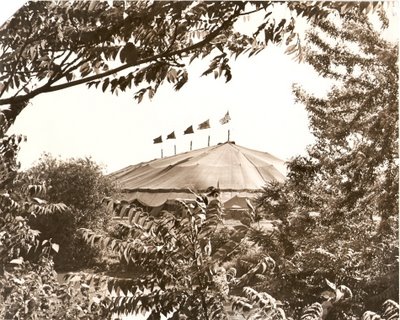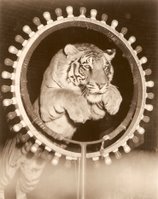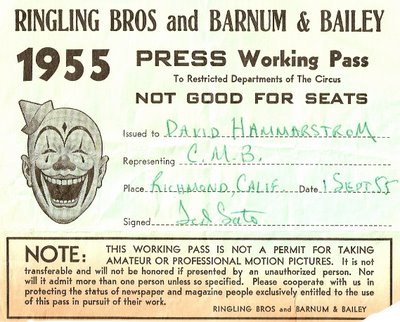
 Into Los Angeles, the almost-on-time Amtrak bus drops me off at my cathedral-in-waiting, Union Station. The day is perfect. No city is more inviting under the sun — nor more ominous by night than Hollywood ...
Into Los Angeles, the almost-on-time Amtrak bus drops me off at my cathedral-in-waiting, Union Station. The day is perfect. No city is more inviting under the sun — nor more ominous by night than Hollywood ...I hop a Dash (little busses that feel like living rooms on wheels) to the town’s newest icon, the Disney Concert Hall. There, I land a ticket for tomorrow morning’s Philharmonic. Onto my motel at Sunset and Vermont. After many sleepovers, they are getting to like me. Surprise, they even know how to smile. "You are one of our regular guests!" A King size bed downstairs for King David, complete with my first live-in cockroach, and I mean the first at this Travellodge. With wash cloth in hand, I stomp it flat and toss the cloth with it to the floor. An hour later, comes another roach — but it is the same one! I know about roach motels. Are there roach ERs? Roach HMOs?
I hop the number 2 for North Vine, and walk south to the Linwood Dunn Theatre. Security guards stand ready to pat me down — just to attend the screening of two silent films by the Academy of Motion Picture Arts and Sciences! Inside, I am seated with industry pros (the room buzzes with insider talk), and I learn that this is how non-members are treated. Who said things would never be the same after 9/11?
The next morning, I foot it east down Sunset to enjoy the town’s glamorous decay. In an hour I’ll be having breakfast at Phillipes (where the Paul Eagles Luncheon club used to meet) with a copy of the L.A. Times. From there to the concert. Featured keyboard wiz Jean-Yves Thibaudets uses only his left hand to pound through Ravel’s Piano Concerto for the Left Hand. The work was composed for a musician returning from world war I minus his right arm. Heroic Ravel.

Conductor wunderkind Essa Peka Salonen also premieres his own compelling Helix, a fast-advancing 9-minute opus full of troubling images intended to commemorate the end of WWII. It makes the morning’s major work, Prokoviev’s Romeo and Juliet Suite, seem rather old hat. Not old-hat is Frank Gehry’s Disney Hall — a surreal masterpiece that is in my exalted opinion the most stunning piece of architecture in the United States. See why tinseltown is a draw?
Onto a bus, we are now heading west on Sunset — lovely ride through Bev Hills. Still sunny and perfect with a light breeze tickling the air and caressing the palms. En route, I love glancing up winding hillside roads, wondering which one delivered William Holden in Billy Wilder’s Sunset Boulevard into the clutches of fading film heroine Norma Desmond. Holden was being chased by cops out to repossess his car — and would end up being repossessed by Norma.
Hilgard in Westwood is my stop. There I will transfer to the 261, which ten minutes later deposits me and a young Japanese couple at the Brentwood gates of the magnificent Getty museum. A tram elevates us to the exhilarating plaza on high, where you can view swanky homes in the hills and the smoggy flat lands in the dismal distance.. Sometimes just being at the Getty is the lure. A strange exhibit of Nuevo Japanese "anti art" and "non art" from the early 50s shows how the freshly liberated Japanese set out to shun the past and rush eccentrically into an unknown but free future.
 Outside, while waiting for a 261 to reverse my journey, I fall into an easy conversation with two bright ladies in town on business. One is from Philly; the other from Montreal. How could Cirque du Soleil not enter our impromptu chat? They are certain fans of Cirque, but the Canadian (with no cuing on my part) tells me Cirque is not so good as it was in the begriming. They are "diluting the shows," she regrets. Her Philly pal adamantly agrees. Hmmm. I refrain from commenting; on-the-spot feedback like this is pure journalism. Leave it pure, David. The world speaks in L.A.
Outside, while waiting for a 261 to reverse my journey, I fall into an easy conversation with two bright ladies in town on business. One is from Philly; the other from Montreal. How could Cirque du Soleil not enter our impromptu chat? They are certain fans of Cirque, but the Canadian (with no cuing on my part) tells me Cirque is not so good as it was in the begriming. They are "diluting the shows," she regrets. Her Philly pal adamantly agrees. Hmmm. I refrain from commenting; on-the-spot feedback like this is pure journalism. Leave it pure, David. The world speaks in L.A.Saturday, I rail down to Oceanside along creamy blond beaches, there to visit old L.A. friends Alice and Sal, who now reside in a tony Carlsbad "manufactured." In better nights at piano bars, Sal (who by day taught L.A. students driver education) sang like my idol, Frank — I called him Salnatra. Now he barely walks. And I fear the medical-pharmaceutical industrial complex has gotten the best of Sal. A head shrink (I am leery of them all) gives Sal so many pills, Sal’s medicine cabinet has reduced his will to a whisper. I could cry. His Brit wife, Alice (who insists her real name is Judy) remains as chock full of chatter and the embracement of life as ever she was. I meet her charming sister Ruth, who insists that Alice is Alice. Ruth (who is Ruth – and a widow) is in from England and in the tempered throes of a new romance. No wonder I call Judy who is Alice or Judy ... Dame Dither.
Taking our cue from Sal, we opt for a sizzling lunch at the 101 Café, a landmark grill since ‘28. Let there be sodium on this day. Maybe a burger is all Sal needs to pull out. I keep asking him when he will sing "Autumn in New York,"and he keeps putting me off. Once through Pasadena not so long ago, he rebounded from another post-operation depression and was filling the air, punk style, with a catalog of Sinatra hits. And the old Sal magically returned.
 And once, only last November on a day that hit 97 degrees (there they are, at the plaza by Olvera Street the previous July) Dame Dither and "Salnatra" came to see me off for Florida on Amtrak’s The Sunset Retarded.
And once, only last November on a day that hit 97 degrees (there they are, at the plaza by Olvera Street the previous July) Dame Dither and "Salnatra" came to see me off for Florida on Amtrak’s The Sunset Retarded.Back by train to L.A., back to another edgy Hollywood by dark. When I lived here during the 80s on North Orange Drive, at least I had my own apartment to which I could run and hide and feel safely tucked in while police helicopters overhead threw spotlights onto the seedy streets chasing down thugs.
The sun has fled and the gig is up. The city now looks like a cheap film noir version of itself in better days when real movie stars walked the streets and graced red carpets. Now the Boulevard seems lost and irrelevant, the tourists just another flock of gawkers passing through.
At 10:50 on a Saturday night, I board a Greyhound for my return north. Nothing noteworthy; no creeps on board, thank God. Not even the faint sound of a cellphony telling somebody the bus is late so expect another call in another five minutes. A congenial cargo of withered humanity remains atypically quiet during the tear up I5 into Oakland --- to another place not so inviting by night.
Leaving town, I marvel at the cockroach who self-revived, and I wonder if Sal can, too. Maybe he will one day dismiss Dr. H. Shrink and sing "Autmn in Carlsbad."
And that’s a Tinseltown wrap!
From April 6, 2007





